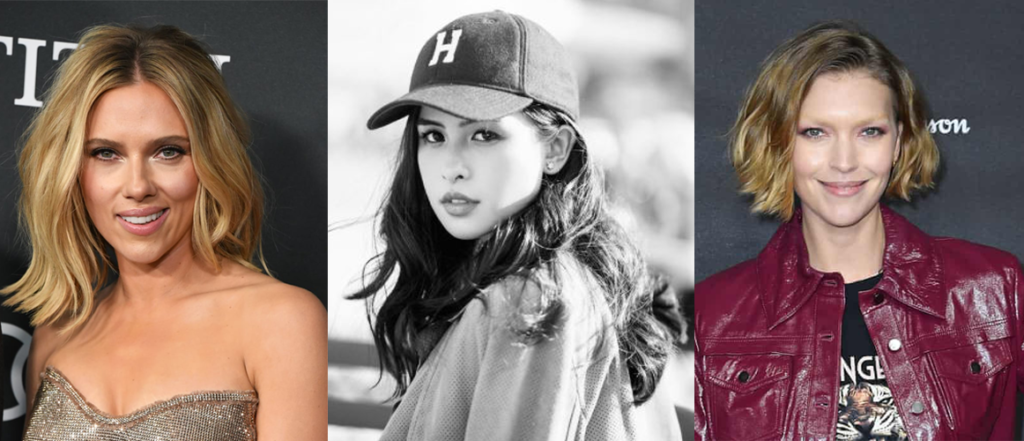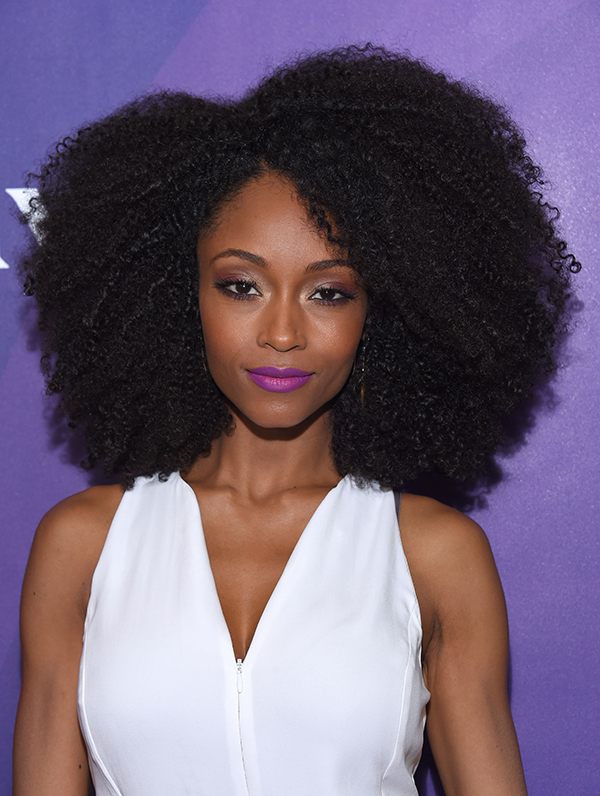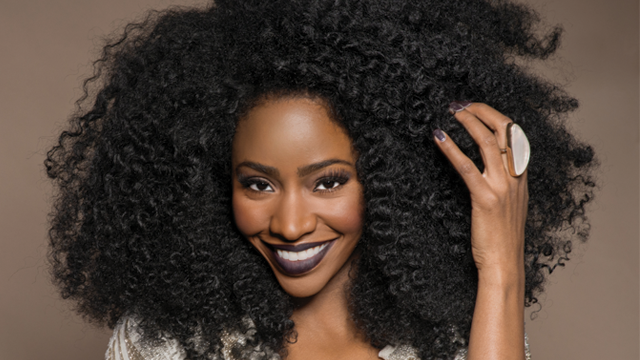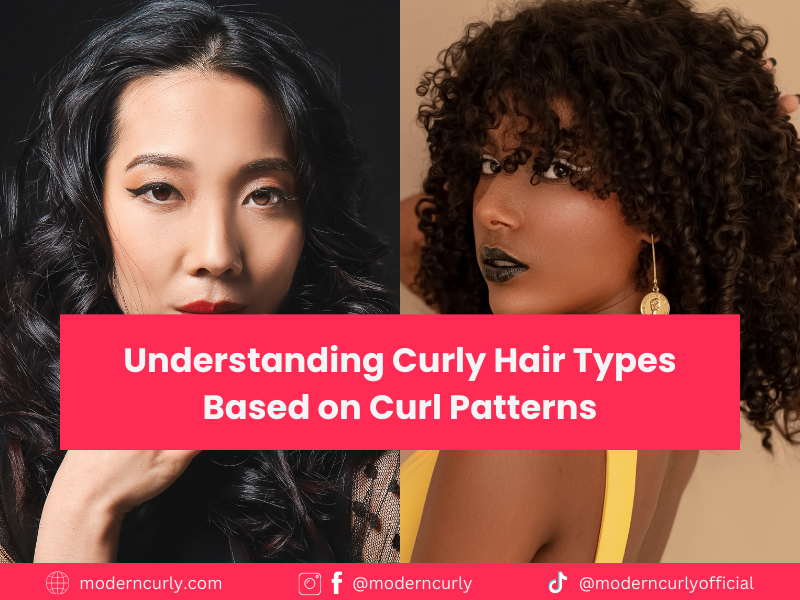Recognizing your curl pattern enables you to choose appropriate hair care products. Different curl types require varying levels of moisture and styling techniques. By identifying your type, you’ll avoid wasting money on ineffective items. Not only that, knowing your curl type builds confidence. You’ll understand how to embrace your natural texture instead of fighting it. This self-awareness often results in improved styling outcomes and reduced frustration.
Type 1: Straight Hair
Based on curl level, straight hair can be categorized as Type 1. This hair type has straightness from the roots to the ends and almost no curvature at all. Type 1 hair is highly sought after and very easy to manage.
However, straight hair allows oil to travel down more easily, making it appear greasy more quickly. To control this, experts recommend washing your hair every three days to prevent excessive oil production on the scalp.
Straight hair or Type 1 can be further divided into three subtypes: 1A, 1B, and 1C.
Type 1A
Hair that is very straight, like in shampoo commercials in Indonesia, is Type 1A hair. This hair has no curl, is thin, and the strands are fine. This hair type is very prone to looking greasy because oil from the scalp easily travels down the hair shafts. Due to its natural smooth and “flat” nature, Type 1A hair also struggles to hold styling and can appear flat if not properly cared for.
Type 1B
This hair type is likely the most common. This straight hair has a slight wave and a soft, fine texture. Type 1B hair is also low maintenance and has natural volume due to the slight wave.
Type 1C
Moving on to another straight hair type, Type 1C hair also has a slight wave and appears naturally voluminous. The difference is that 1C hair is thicker and coarser compared to Types 1A and 1B, making it more difficult to style. Type 1C hair can easily appear oily, but at the same time, it also looks full, thick, and voluminous.
Type 2 (Wavy Hair)

Curly hair type 2
Wavy hair falls between straight and curly textures, offering versatility and natural movement. Wavy locks typically have a gentle “S” pattern that’s visible when wet. Your hair may appear straight when dry but develop waves as it air dries. Type 2 hair often has more volume at the roots compared to straight hair.
Texture can vary from fine to coarse. You might notice your waves becoming more defined in humid weather. Wavy hair tends to be prone to frizz, especially in damp conditions. Styling this hair type is relatively easy. You can enhance your natural waves or straighten them with minimal effort. Products that provide light hold and moisture work well for wavy hair.
Type 2A

Scarlett Johansson, Maudy Ayunda and Arizone Muse with type 2A curly hairstyles
2A is the loosest wave pattern. Your hair forms a gentle, tousled texture rather than a defined “S” shape. It’s often fine and thin, lying relatively flat at the crown. This subtype is the most prone to becoming greasy quickly. You may find your waves lose definition easily, especially in dry climates. To maintain your waves, use lightweight products that won’t weigh down your hair. Enhancing 2A waves can be achieved with sea salt sprays or mousse. These products add texture and hold without creating stiffness or crunchiness.
Type 2B
2B waves are more defined than 2A, forming a clear “S” pattern. Your hair likely has more volume and may be resistant to styling. The waves start from the mid-length of your hair. Frizz can be a common issue for 2B hair, particularly in humid environments. You might notice your hair becoming wavy when wet and developing more texture as it dries. To manage 2B waves, focus on moisture and anti-frizz products. Leave-in conditioners and curl creams can help define your waves while combating frizz.

Salma Hayek
Type 2C
2C is the curliest of the wavy subtypes. Your waves are well-defined and start from the roots. This pattern is often mistaken for curly hair due to its prominent “S” shape. Thick and coarse in texture, 2C hair is prone to frizz and can be challenging to style. You might struggle with volume control, especially in humid conditions.
Curly hair types like 2C benefit from moisturizing products. Use leave-in conditioners and styling creams to enhance definition and reduce frizz. Avoid brushing your hair when dry to maintain wave integrity.

Lorde
Type 3 (Curly Hair)

Curly Hair Type 3
Type 3 hair forms distinct spirals and loops. This category encompasses a range of curl patterns from loose waves to tight corkscrews. Curly hair has a unique structure. Its follicles are asymmetrical and oval-shaped, resulting in curved hair shafts. This hair type tends to be drier than straight hair due to its shape, which makes it harder for natural oils to travel down the strand.
Curly hair is prone to frizz and breakage. You’ll find it expands in humid conditions and shrinks when dry. Its texture can vary from fine to coarse, influencing how defined the curls appear. Proper care is crucial for curly hair. Use sulfate-free shampoos and deep conditioning treatments to maintain moisture. Avoid brushing dry curls, as this can disrupt the natural pattern and cause frizz.
Type 3A

Zendaya
Type 3A curls are loose and bouncy. They form large, loopy S-shaped spirals about the width of a sidewalk chalk. This curl type is often shiny and has a defined pattern. You’ll find 3A curls are the most responsive to styling products. They can easily be enhanced or relaxed with the right techniques. However, they’re also prone to frizz in humid weather. To care for 3A curls, use light-weight products that won’t weigh them down. Avoid over-washing, as this can strip natural oils and cause frizz.
Type 3B

Leona Lewis
Type 3B curls are tighter and more voluminous than 3A. They resemble corkscrews or springy ringlets about the width of a Sharpie marker. These curls have a clearly defined S-shape when stretched.
3B hair is often full of body and can be prone to dryness. It may shrink significantly when dry, appearing much shorter than its actual length. You should focus on moisture retention for 3B curls. Use leave-in conditioners and seal in hydration with oils or creams. Protect your curls at night with a satin pillowcase or bonnet.
Type 3C

Yara Sayeh Shahidi
Type 3C curls are the tightest in the Type 3 category. They form dense, springy ringlets about the width of a pencil or straw. This curl type is often very voluminous and can be prone to frizz. 3C hair typically has a lot of texture and body. It can be more fragile than other curl types due to its tight coils. You might notice significant shrinkage when your hair dries.
Hydration is key for 3C curls. Use rich, creamy products and deep condition regularly. Consider the “LOC” method (Liquid, Oil, Cream) to lock in moisture. Gentle detangling and protective styles can help maintain curl health.
Type 4 (Coily Hair)

Curly Hair Type 4
Type 4 hair is characterized by its tight, spiral-like curls and dense texture. This hair type requires special care and attention to maintain its health and natural beauty.
Coily hair has a distinctive Z-shaped pattern when stretched. It’s typically very fragile and prone to breakage due to its structure. The tight coils make it challenging for natural oils to travel down the hair shaft, often resulting in dryness. Your Type 4 hair has a high shrinkage rate, which means it appears much shorter than its actual length when dry. This hair type is also highly porous, absorbing moisture quickly but losing it just as fast.
Coily hair requires frequent moisturizing and gentle handling. You’ll need to use products specifically designed for this hair type to keep it healthy and manageable.
Type 4A
4A hair has a defined S-shaped coil pattern. Your curls are tight and springy, resembling a corkscrew. This subtype has the most defined curl pattern among Type 4 hair. When properly moisturized, 4A hair has a visible sheen. You might notice that your hair clumps together easily, forming small, defined curls. This subtype is often more manageable than 4B or 4C.
To maintain 4A hair, focus on moisture retention. Use leave-in conditioners and seal with natural oils. Gentle detangling and protective styling can help preserve your curl pattern and prevent breakage.

Yaya Dacosta
Type 4B
4B hair has a less defined curl pattern compared to 4A. Your hair forms tight, Z-shaped coils that bend in sharp angles. This subtype has a fluffy, cotton-like appearance when dry. Your 4B hair may appear denser and more compact than 4A. It’s prone to shrinkage and can be more challenging to keep moisturized. The zigzag pattern makes it susceptible to tangling and breakage.
To care for 4B hair, prioritize moisture and gentleness. Use thick, creamy products to hydrate and define your coils. Regular deep conditioning treatments can help maintain hair health.

Teyonah Parris
Type 4C
4C hair has the tightest curl pattern of all Type 4 hair. Your coils are so tightly wound that they may not form a discernible pattern. This subtype is often described as kinky or coily. Your 4C hair is extremely delicate and prone to breakage. It experiences the highest rate of shrinkage, sometimes up to 75% of its actual length. This hair type requires the most moisture and gentle handling.
Caring for 4C hair involves a consistent routine. Focus on deep moisturizing treatments and protective styling. Use products with natural ingredients to nourish your hair and scalp. Gentle detangling and minimal manipulation can help preserve your hair’s health and length.

Lupita Nyong’o
Steps to Determine Your Curl Type
Start by washing your hair and letting it air dry without any styling products. Examine your curls closely in natural light. Look at the shape and size of your curl pattern. Is it loose and wavy, or tight and coily? Next, measure the circumference of your curls. Wider curls typically indicate looser patterns, while smaller ones suggest tighter coils. Pay attention to how your hair reacts to humidity and moisture.
Consider the texture of your strands. Fine hair tends to be more delicate, while coarse hair may feel rougher. This factor influences how your curls form and behave. Lastly, assess your hair’s density. Thin or thick hair can affect the overall appearance of your curl pattern.
How Often Should You Wash Your Curly Hair Type?
Washing frequency for curly hair varies based on curl type and individual needs. Proper cleansing routines can help maintain healthy, defined curls.
Loose waves (Type 2) typically require washing 2-3 times per week. These curls tend to become oily faster due to their proximity to the scalp. Springy curls (Type 3) benefit from washing 1-2 times weekly. This pattern allows natural oils to nourish the hair between washes.
Coily or kinky hair (Type 4) needs the least frequent washing, often once a week or every 10-14 days. This curl type is prone to dryness, so less washing helps retain moisture. Adjust your schedule based on lifestyle, scalp condition, and hair health.
Consider co-washing (using conditioner only) between full washes to refresh curls without stripping natural oils.
Best Practices for Washing Curly Hair
Use lukewarm water when washing your curls. Hot water can strip away natural oils and lead to frizz. Apply shampoo primarily to your scalp, gently massaging to remove buildup. Avoid harsh scrubbing, which can cause tangles and breakage.
Choose sulfate-free, curl-specific shampoos to maintain moisture. These products cleanse without over-drying your hair. Focus conditioner on mid-lengths and ends, where curls need the most hydration.
Detangle your hair while it’s saturated with conditioner using a wide-tooth comb or your fingers. This method minimizes breakage and helps define curl patterns. Rinse with cool water to seal the cuticle and enhance shine.
How Many Curl Types Can You Have?
Curly hair comes in various patterns and textures. You might have multiple curl types on your head, each requiring different care techniques.
Mixed Curl Patterns
Your hair can exhibit diverse curl patterns simultaneously. Some people have looser waves near the nape and tighter coils at the crown. This variation is normal and often genetic. Curl patterns may range from Type 2 (wavy) to Type 4 (coily).
Factors like humidity and styling methods can affect how your curls appear. Heat damage might straighten certain sections, while others remain curly. Hormonal changes can also influence curl pattern distribution across your scalp.
Embracing your unique mix of textures is key. Experiment with products that cater to different curl types. This approach helps maintain overall hair health and enhances your natural pattern.
Managing Multiple Curl Types
Caring for various curl patterns requires a tailored routine. Start by identifying the different types present in your hair. Use a curl pattern recognition system to help categorize your curls accurately. Consider using lighter products on looser curls and heavier creams or butters on tighter coils. Adjust your washing frequency based on the needs of each section. Looser curls might require more frequent cleansing, while tighter coils benefit from less washing.
When styling, apply techniques suited to each curl type. Use finger coiling for tighter curls and scrunch looser waves. This personalized approach helps maintain definition across all patterns. Regular trims are crucial to prevent uneven growth and maintain a cohesive look. Seek a stylist experienced in cutting curly hair for best results.
What Are the Benefits of Knowing Your Type?
Understanding your curly hair type empowers you to make informed decisions about your hair care routine. It helps you tailor your approach, leading to healthier, more manageable curls.
1. Personalized Hair Care
Knowing your curl type allows you to customize your hair care regimen. Different curl patterns require specific care techniques. For instance, tighter curls often need more moisture, while looser waves may require lighter products.
You’ll learn how frequently to wash your hair based on its texture. This knowledge helps prevent over-cleansing or under-nourishing your curls. Understanding your type also guides you in choosing appropriate styling methods. Some curls respond well to finger-coiling, while others thrive with twist-outs or braid-outs.
2. Choosing the Right Products
Identifying your curl type simplifies product selection. Each texture has unique needs, and knowing yours narrows down options. For example:
- Type 2 waves: Light mousses or gels
- Type 3 curls: Creams or leave-in conditioners
- Type 4 coils: Rich butters or heavy oils
This knowledge saves you time and money by avoiding ineffective products. It also helps prevent issues like product buildup or dryness caused by unsuitable formulations.
3. Styling Tips
Recognizing your curl type enables you to master styling techniques suited to your texture. You’ll learn which methods enhance your natural pattern and which might disrupt it. For looser curls, scrunching might suffice. Tighter coils may benefit from the LOC (Leave-in, Oil, Cream) method.
Understanding your type helps you choose appropriate tools. Wide-tooth combs work well for most curl types, but denman brushes might be ideal for defining certain patterns. You’ll also gain insight into protective styles that suit your texture, promoting length retention and minimizing damage.
What Other Hair Types Are There?
Hair types vary widely beyond curly. Straight hair has its own unique characteristics and classifications. Let’s explore the differences between straight and curly hair types.
1. Overview of Straight Hair Types
Straight hair is classified into three main categories: Type 1A, 1B, and 1C. Type 1A is extremely fine and thin, lying flat against the scalp. It’s often resistant to styling and can appear oily quickly.
Type 1B has more body and volume. This hair type is slightly thicker and can hold curls better than 1A. You’ll find it easier to style and manage.
Type 1C is the thickest of straight hair types. It’s coarse and can be prone to frizz in humid conditions. You might notice it has a slight wave when air-dried.
2. Comparison with Curly Hair Types
Curly hair differs significantly from straight types in texture and care needs. While straight hair has a round cross-section, curly hair is more oval or asymmetrical.
Curly types range from Type 2 (wavy) to Type 4 (coily). Type 2 hair forms an “S” shape, while Type 3 creates spirals. Type 4 hair has the tightest coils.
Straight hair tends to be oilier as sebum travels easily down the hair shaft. Curly hair is often drier because oils have difficulty navigating the bends and turns.
Styling methods differ too. Straight hair typically requires heat for curling, while curly types often need products to enhance natural patterns.
Frequently Asked Questions
Curly hair types vary widely, with distinct characteristics and care needs. Understanding your specific curl pattern helps in choosing appropriate products and styling techniques.
How can I determine my specific curly hair type?
Examine your hair when it’s wet and dry. Look at the shape of your curls – are they loose waves, tight coils, or something in between? Consider factors like strand thickness, porosity, and density. Compare your observations to standard curl type charts for guidance.
What are the main characteristics of 3A curly hair?
3A curls form loose, springy loops about the width of a sidewalk chalk. They have a defined S-shape and tend to be shiny. This hair type is prone to frizz and benefits from lightweight styling products to enhance definition without weighing down the curls.
What is the difference between 3B and 3C curly hair?
3B curls are tighter than 3A, resembling a Sharpie marker in diameter. They form springy ringlets that are full and voluminous. 3C curls are even more compact, about the size of a pencil. These tight, corkscrew curls are often densely packed and prone to shrinkage.
How does the hair type chart classify different types of curls?
The hair type chart categorizes curls from 2A to 4C. Type 2 represents wavy hair, type 3 covers curly patterns, and type 4 includes coily textures. Each number is further divided into A, B, and C subcategories based on curl tightness and definition.
What should one consider when identifying 2C versus 3A hair?
2C hair forms defined S-shaped waves that are nearly curly. 3A hair has more distinct, looser curls. Observe how your hair dries naturally – 2C may appear straighter at the roots with waves starting mid-shaft, while 3A curls typically begin closer to the scalp.
Which haircare practices are recommended for maintaining healthy 2B curls?
Use sulfate-free shampoos to avoid drying out your waves. Apply a lightweight conditioner, focusing on the ends. Try the “squish to condish” method to enhance wave formation. Use a microfiber towel or t-shirt to gently squeeze out excess water. Apply a curl-enhancing cream or mousse for definition.

